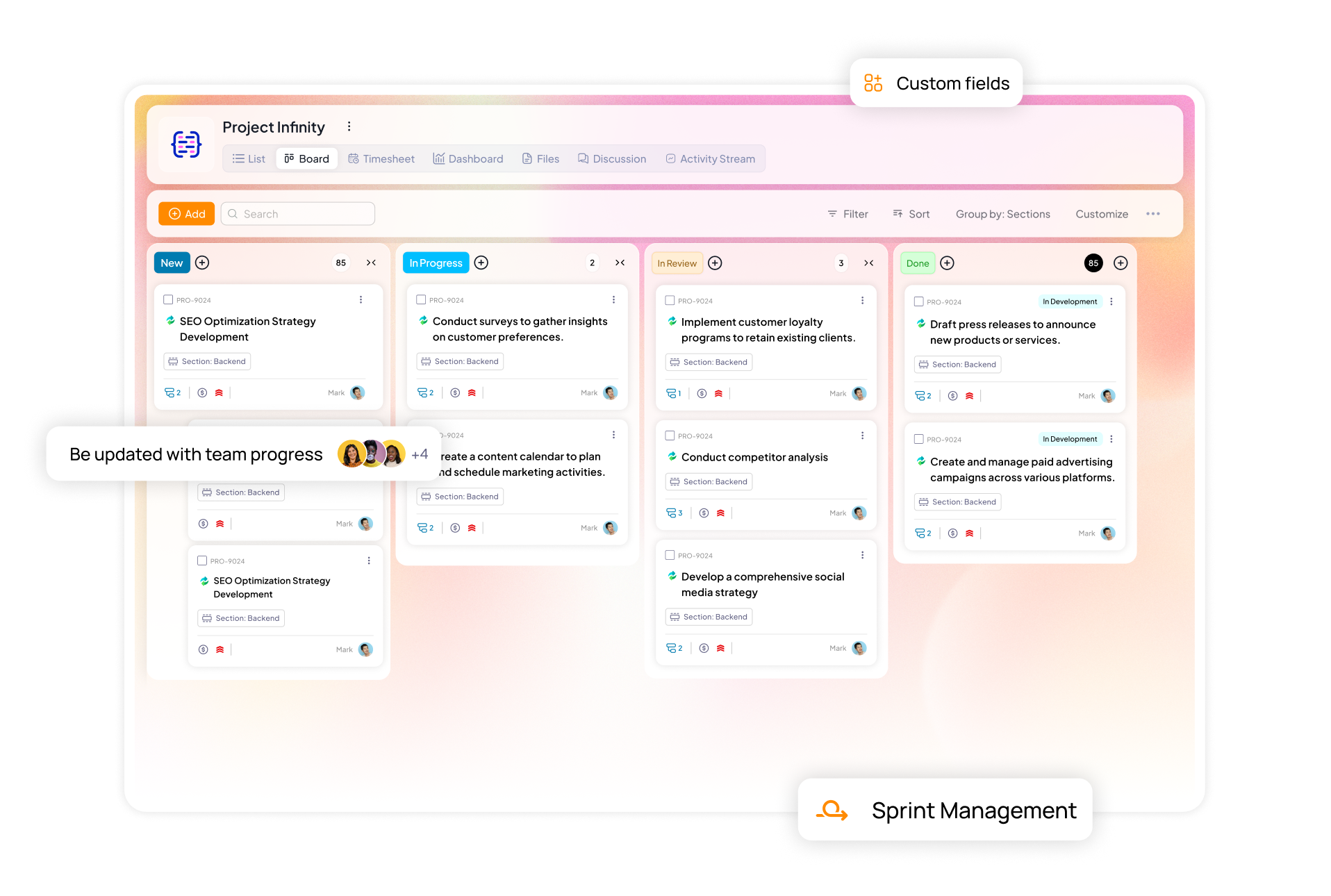We had everything, and we still failed.
Picture this: you are working on a project with a clear goal, a skilled team, and a generous budget. It is foolproof—until it isn’t. Delays are piling up, stakeholders are growing distant, and the budget is spiraling out of control.
Sounds familiar?
Even the most seasoned project managers can fall prey to the hidden challenges that undo the best-laid plans. This article gives you a blueprint to navigate the common challenges in project management and emerge victorious at the end.
Top 8 Project Management Challenges and Solutions
According to research conducted by Nermina Durmic, there are 5 key dimensions that influence a project’s success. These factors are: project success, project outcome success, operational success, stakeholder satisfaction, and business success.
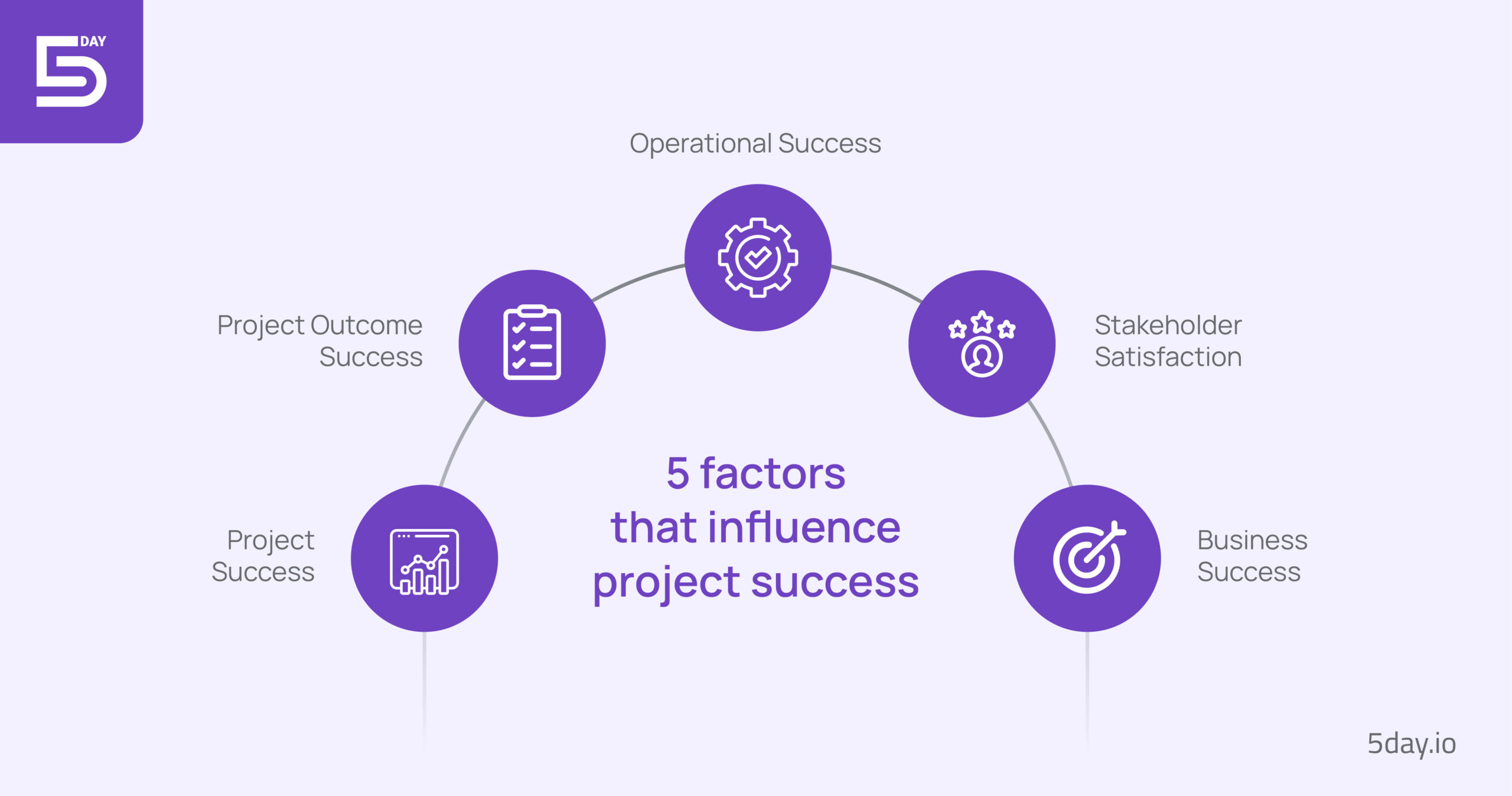
All the challenges that a company faces while executing a project lie within these 5 dimensions. We will now discuss these challenges in project management one by one and see how you can solve them to achieve project success faster.
1. Lack of a well-defined goal
Having a clear, well-defined goal is important as it will give your entire team a direction to work towards. It is a fundamental part of the project’s success.
Despite this, the Pulse of Profession Report by PMI stated that nearly 37% of projects fail due to a lack of proper goal setting. An unclear goal causes:
- Inconsistent decision-making
- Difficulty in measuring success
- Loss of stakeholder and team confidence
Solution
To set clearly defined goals and milestones, here is a step by step process you can follow:
- Get an input from all the key stakeholders about the priorities of the project with a project kickoff meeting
- Clearly define your goals using the S.M.A.R.T. and C.L.E.A.R. goal setting method
- Break your entire project timeline into milestones, tasks and subtasks to make your progress more trackable
- Identify which tools, resources, and skills are missing to reach the current goal and identify future roadblocks
- Create a goal statement and share it with all the key stakeholders and team members
Also read: How to set up your project for success with project initiation
2. Team conflict and communication issues
Poor communication is directly tied to project failure when it comes to project management.
According to The State of Business Communication report by Grammarly, poor communication costs businesses around $12,506 per employee per year. It impacts the operational success of your project.
Additionally, around 51% of employees experience increased stress due to unclear communication. Poor communication also leads to:
- Misinterpretations of the message resulting in mistakes
- Delays in deadlines due to a lack of priority and missed details
- Frustration amongst team members and unnecessary conflicts
- Missed opportunities due to unclear understanding of goals
- Waste of resources due to poor planning
Solution
To handle all project communication well, the very first step you need to take is to create a communication plan. It is a document that outlines who needs to know what, when, and how.
After that, clearly define everyone’s roles and permissions so it is clear to everyone what is expected of them during the project. You can determine this using the RACI method.
To make communication easier, centralize your tasks and project management tool, where every member has a custom role and permission for their specific task right where they work. 5day.io brings all your conversations, documents, and projects in one place, where you can create custom roles and permissions for everyone on your team so everyone is in sync.
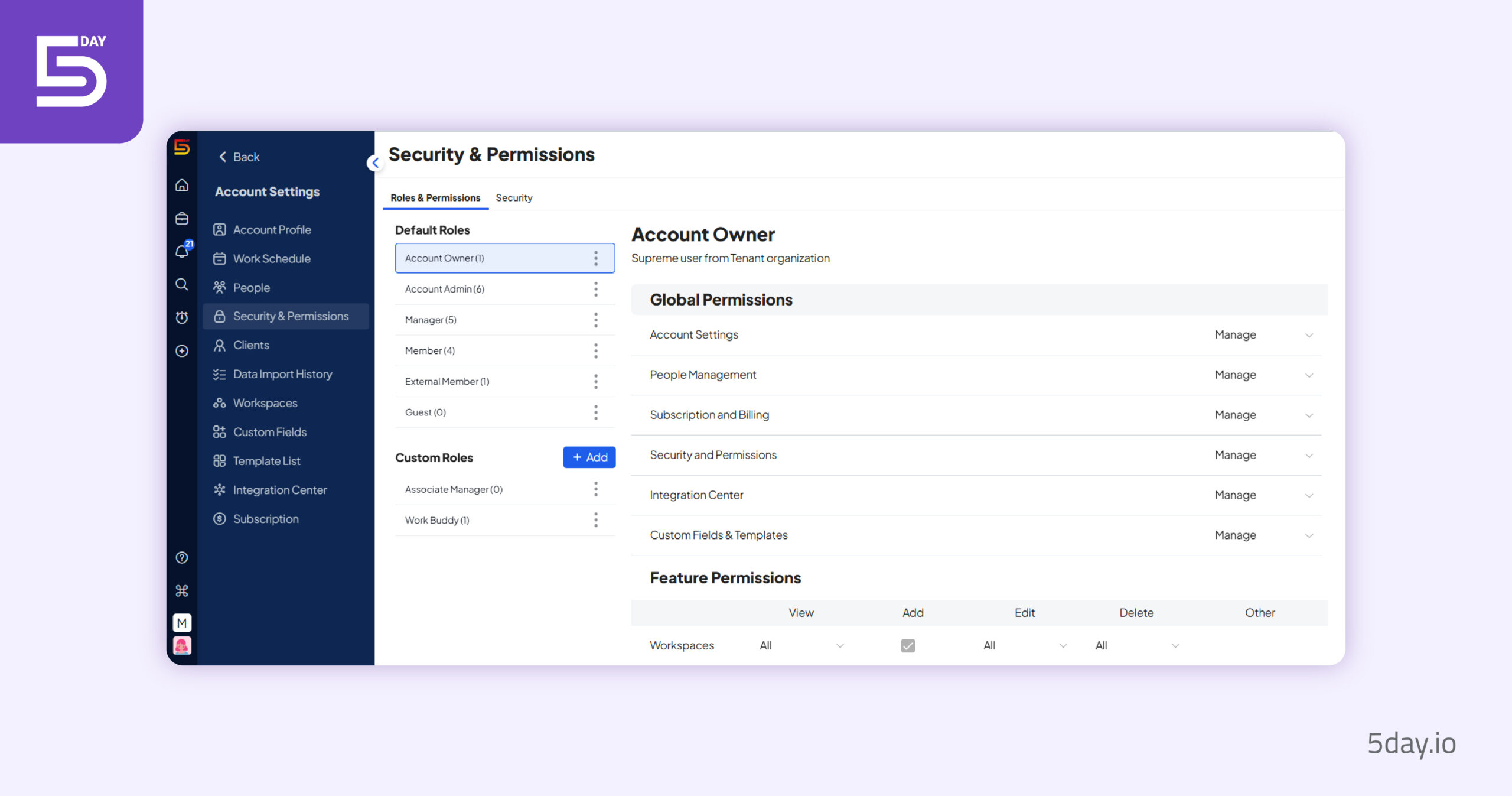
You can also talk directly about the tasks or projects assigned to you in 5day.io. Tag people or tasks so you can discuss important updates without losing context.
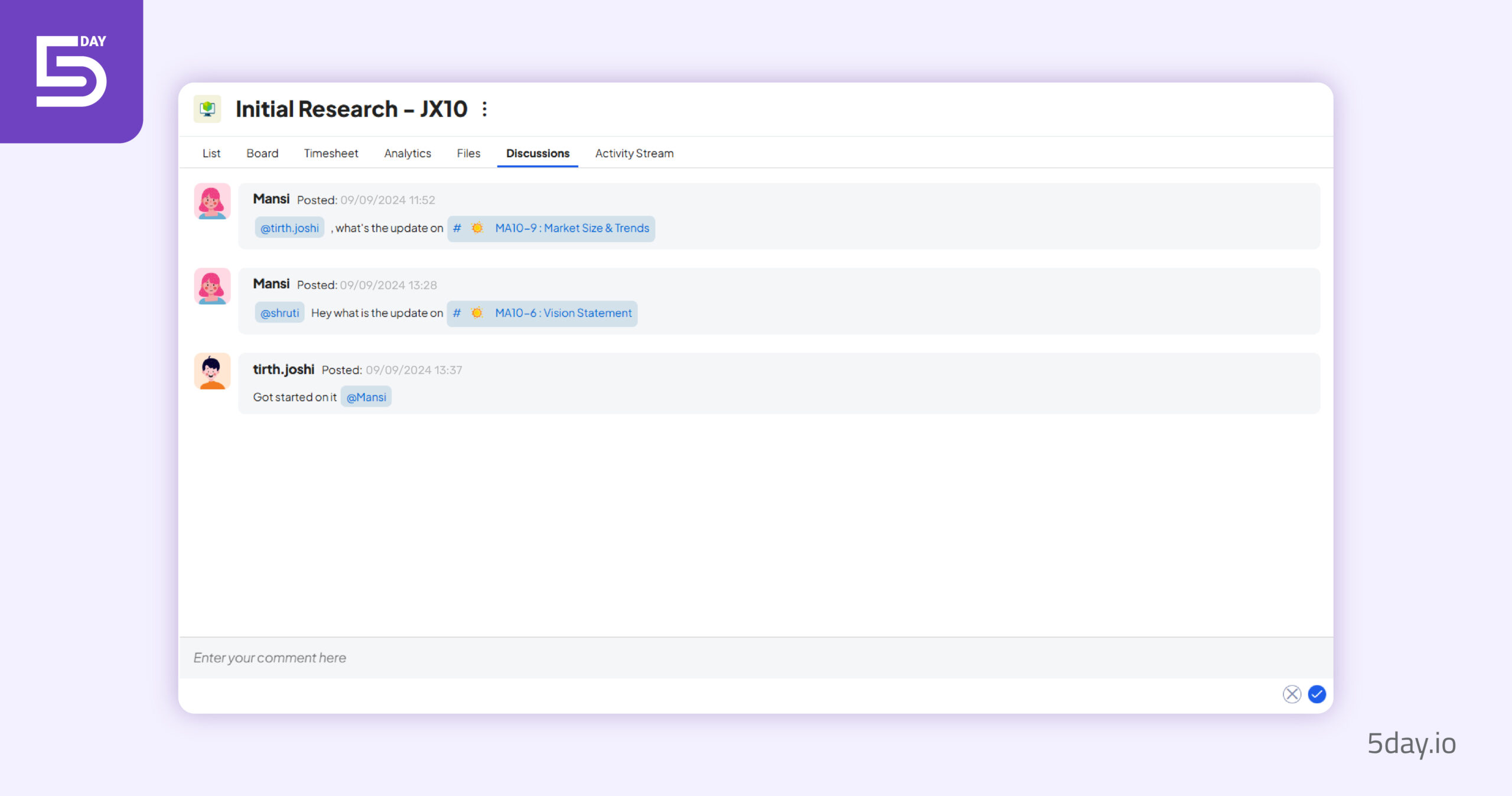
3. Scope Creep
A project’s scope is an end goal for the project that is agreed between the stakeholders and the project team. Changes in that scope at any point throughout the tenure of the project lead to scope creep, which is one of the very big project management issues.
These changes in requirements can lead to:
- Alteration of the current budget
- Delay in the timeline
- Lack of resources
- Low quality of work
According to a study, around 60 project managers stated that 92% of their projects failed due to scope creep. Thus, it becomes very important to define the project’s scope accurately.
Solution
To make sure the project runs within scope and gets completed successfully, follow these steps:
- Clearly define the goal of the project during the kickoff meeting
- Create a project scope document after defining the project scope
- Build a change management process in place to account for any changes in the scope
- Communicate all the changes with the key stakeholders of the project
- Monitor the changes for any budget, time, or resource overrun
4. Unclear processes
Even the best of the best people need one thing to succeed: direction. Without knowing what to achieve and how, your star player will be clueless and make assumptions or execute tasks as they see fit. This is currently one of the most common issues in project management.
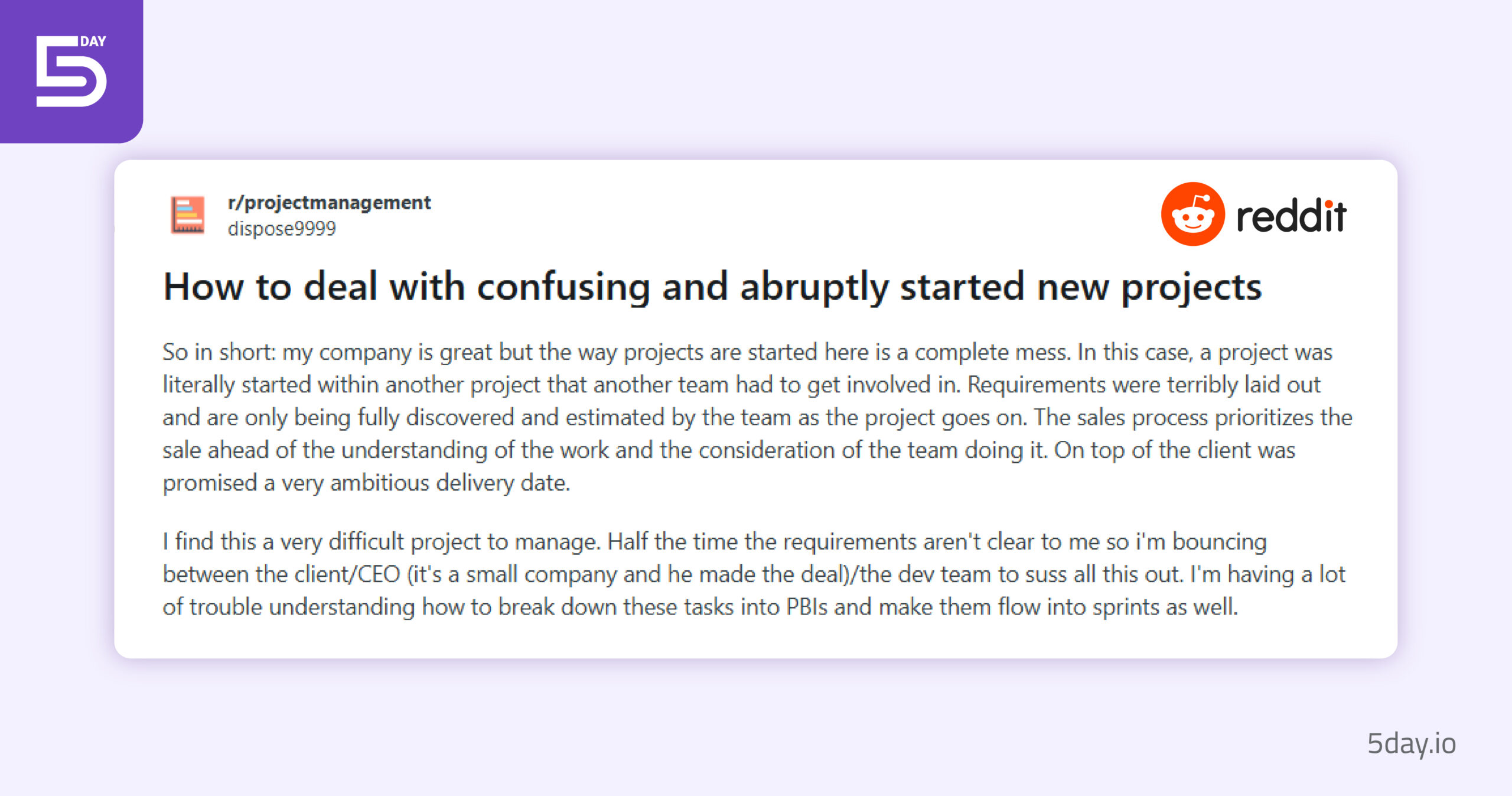
Source: Reddit
A lack of proper key processes can derail your entire project, leave your team dissatisfied, and cause project failure.
These key processes in project management include:
- Change Management
- Risk Management
- Stakeholder Management
- Scope Management
- Resource Management
- Schedule Management
- Cost Management
- Quality Management
- Communication Management
- Issue Management
- Performance Management
Solution
Start by documenting all workflows, roles, and responsibilities clearly. Use tools like process maps or flowcharts to visualize steps and identify gaps.
Establish standardized procedures and make sure they are communicated to the team. Regularly review and update processes to adapt to changes.
Training and open communication are vital to get everyone up to date with their roles and tasks and to reduce ambiguity.
5. Lack of skills and training
As a project manager, your goal will always be to create the best working environment for your team. However, if there is a mismatch between your team’s skills and your project’s requirements, even the most productive environment cannot prevent problems in project management.
Other possible risks of having an inexperienced team are poor quality of work, increased costs due to mistakes, missed deadlines, reputation damage with key stakeholders, and team burnout.
Solution
Here’s the thing: You do not need to go out and look for the perfect team member to fit your needs. More often than not, that is wishful thinking. Instead, take the steps below to extract the best of what each member brings to the table and train them for the rest.
- Conduct a skill assessment to understand the strengths and weaknesses of every resource
- Pair people with tasks that leverage their strengths and provide work buddies for tasks where they need guidance
- Train your teams to equip them with the correct skills
- Adjust your project timeline and resources realistically to account for your teams’ skills
6. Disengaged stakeholders
Lack of stakeholder engagement happens when the client or leadership team is not actively interested in engaging with the project.
It’s one of the project management issues that can happen for multiple reasons, including competing priorities, lack of ownership, unclear communication, or complex processes.
Delayed decision-making, no buy-in, and mismatched resource allocation are all results of disengaged stakeholders.
Solution
- Create a strategy outlining roles, responsibilities, and communication methods.
- Use regular updates, tailored communication, and feedback mechanisms to keep stakeholders informed and involved.
- Engage them at the project’s inception to build trust, gain insights, and foster collaboration.
7. Budget restrictions
On average, a project manager handles between 5 to 20 projects at a time. So, it’s safe to say that estimating costs for every project and creating a budget is no cakewalk. If you add scope creep to this equation, things get even trickier.
Project managers need to plan their budgets accurately to successfully complete a project, and they need to do it while considering cost overruns or changes in scope.
Solution
Here’s how to mitigate a budget overrun problem before it occurs:
- Create a contingency reserve for emergency situations
- Form a change committee or a change management process to formally accept new tasks within an approved timeline or goal
- Closely monitor any changes done and its impact on the budget
- Constantly keep the stakeholders informed about the changes in the project
8. Picking the right project management tool
Let’s say your project is going well, and you have not faced any of the challenges faced by project managers that we discussed above. You have the right plan, goal, budget, stakeholders, team, and process. There is a chance that your project could still be derailed.
Solution
Having a project management tool helps you keep track of your entire project, from the minutia to the overview of the big stuff. It helps you break down your project into the most actionable chunks, keep an eye on the project’s progress, and keep everyone accountable.
But how?
Let’s use 5day.io as an instance.
5day.io is a project management tool that combines your projects, tasks, timesheets, conversations, and documents all in one place. You can customize the entire tool to fit your workflow and monitor all the delays, and progress using analytics.
By combining collaboration and timesheet features in the same tool, it reduces the time your team takes switching between tools and boosts efficiency with features like My Work, Reminders, recurrence, and Auto Timer.
It is a complete project management system built while keeping your and your teams’ most essential requirements in mind.
Want to give it a try? Start your 30-day free trial today. No credit card needed!




